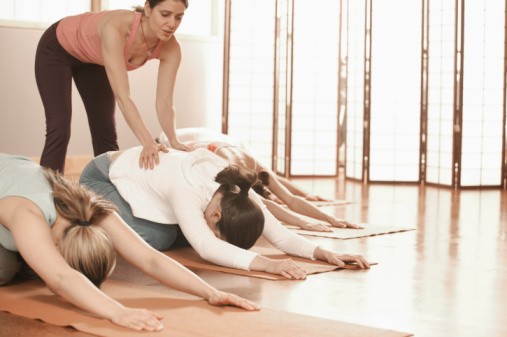It’s a jungle out there, so they say. Safety seems to be a myth in many of our daily activities. The news is full of all the dangers that await us, from tainted food to natural disasters. Sometimes, it seems improbable that we carry on through most of our days without being involved in a variety of calamities.
When you compare yoga to other types of physical activity, for example, surfing or rock climbing, it would seem yoga would be without incident. However, humans come in all shapes, sizes, and fitness levels. Many students who walk in your door may be recovering from illness or injury. Others may walk through in great physical shape, but harboring deep-seated emotional issues.
As yoga works on the physical and emotional self, it is important to be aware of all aspects of safety in the studio in order to guide your student on a gentle journey.
• Studio Safety: The first place to begin ensuring your student’s safety is with the studio. You should have well-structured non-slip yoga mats that are cleaned regularly. Clean blocks with antiseptic spray and launder blankets often. In addition, always requests students to remove shoes before entering the yoga room.
• Personal Safety: A student must feel safe on a personal level. This means they should feel like they have a voice in what level of participation makes them comfortable. This could relate to difficult postures, partner postures, personal adjustments, or even chanting. A student should never feel intimidated or pressured. Communication is the best way to achieve a feeling of ease in the studio.
• Physical Safety: Of course, physical safety is a priority. When your students are all gathered, you can take a quick assessment by just being aware of their physical appearance, posture, and sound of their breathing. Keep an eye out for hyper-extended joints. Begin each class with a proper warm-up. Ask students if they are recovering from injuries. Keep in mind that some students may be reluctant to verbalize their health issues aloud in class. If you notice a new student that appears in poor physical condition, try to find a moment before class for a brief consultation.
Always have new students fill out a brief health assessment form and keep these on file. In a busy studio, it can be difficult to know the physical condition of every new student. However, by being alert and aware, you can minimize the possibility of student injury.
© Copyright 2015 – Aura Wellness Center – Publications Division
See our testimonials to find out what our graduates have to say about teaching therapeutic yoga sessions and our selection of online yoga instructor training intensive courses.
If you are a teacher, yoga school manager, blogger, e-zine, or website publisher, and are in need of quality content, please feel free to use my blog entries (articles). Please be sure to reprint each article, as is. Namaste!
Related Posts
Teaching Yoga: Student Safety is Top Priority
Teaching Yoga for Student Safety
Correcting Yoga Students in Standing Postures


If new students fill out a brief health assessment form then a teacher being alert and aware, and they can minimize the possibility of student injury.